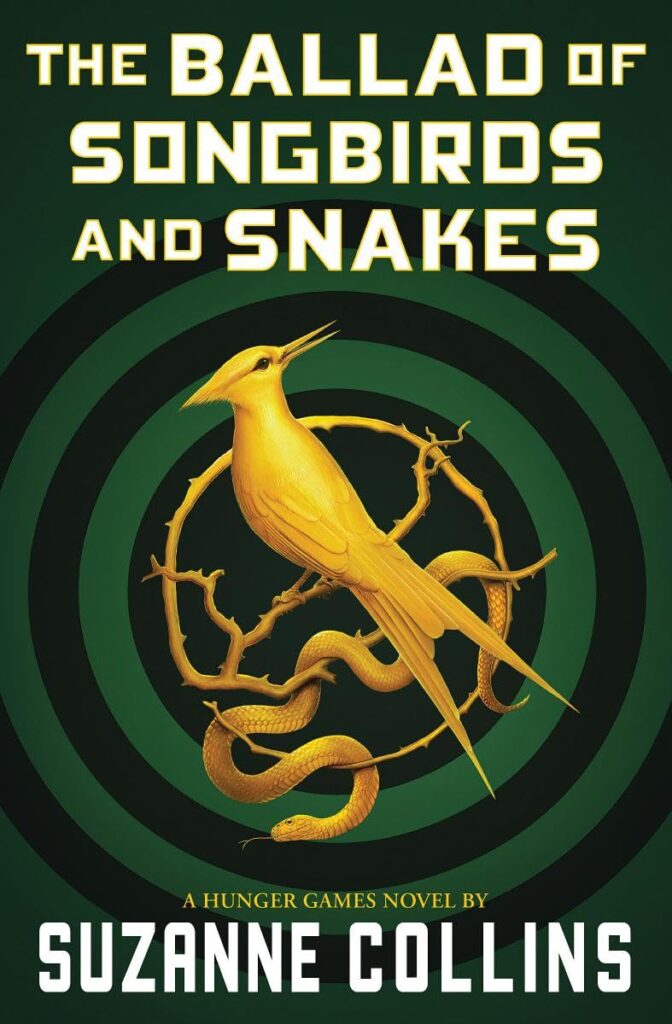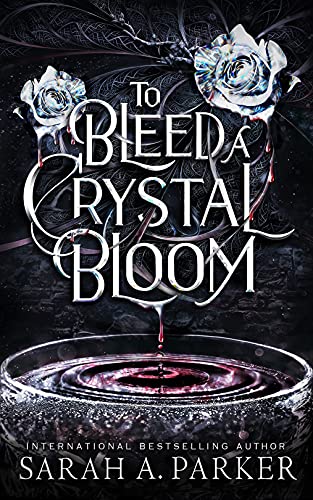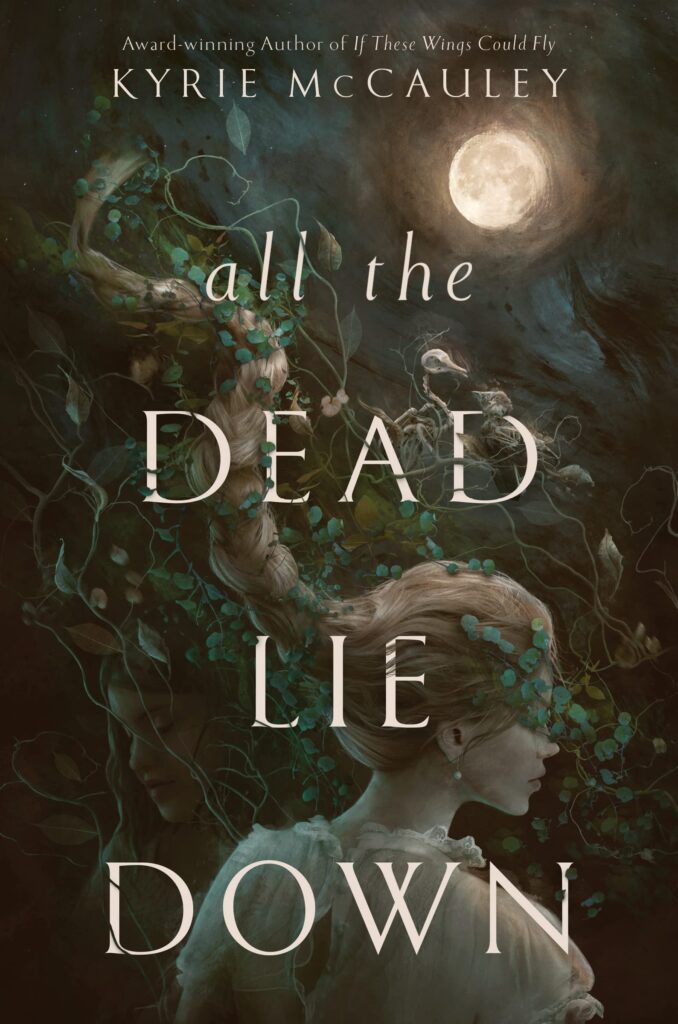
It is the morning of the reaping that will kick off the tenth annual Hunger Games. In the Capital, eighteen-year-old Coriolanus Snow is preparing for his one shot at glory as a mentor in the Games. The once-mighty house of Snow has fallen on hard times, its fate hanging on the slender chance that Coriolanus will be able to outcharm, outwit, and outmaneuver his fellow students to mentor the winning tribute.
The odds are against him. He’s been given the humiliating assignment of mentoring the female tribute from District 12, the lowest of the low. Their fates are now completely intertwined — every choice Coriolanus makes could lead to favor or failure, triumph or ruin. Inside the arena, it will be a fight to the death. Outside the arena, Coriolanus starts to feel for his doomed tribute… and must weigh his need to follow the rules against his desire to survive no matter what it takes.
Introduction
I’m not shy about broadcasting my immense love for The Hunger Games. I’ve re-read the whole series countless times and make it a regular ritual to re-watch the movies. So, you can imagine my excitement when Suzanne Collins announced a prequel. I mean, could our beloved universe, complete with its intricate political dynamics and grim dystopian backdrop, actually be expanding? Was there a chance we’d get a glimpse into the backstory of the Hunger Games? Then the reviews started flooding in, and I’ll admit, my enthusiasm took a hit. However, this year, I decided to take the plunge and read it, especially with the upcoming movie on the horizon. Oh, if only I could turn back time.
“I think there’s a natural goodness built into human beings. You know when you’ve stepped across the line into evil, and it’s your life’s challenge to try and stay on the right side of that line.”
Overview
Set in the same universe as Suzanne Collins’s The Hunger Games trilogy, The Ballad of Songbirds and Snakes takes on the role of a prequel. This novel, published by Scholastic Press in 2020, falls under the genres of young adult dystopian and soft sci-fi. It delves into the formative years of Coriolanus Snow, a character who would later become the president and antagonist in the series. Against the backdrop of a reimagined Panem—an alternate reality where the Hunger Games unfold on an annual basis—this novel unveils the harrowing evolution of the ruthless competition.
As previously introduced within the initial three books and their cinematic adaptations, the Hunger Games thrust 24 young individuals into a life-or-death battle. Within the confines of the arena, the participants are pitted against one another, and only the last survivor secures access to ample sustenance and wealth for their poverty-stricken district. This grisly contest operates as a dual mechanism—both as a punitive measure and a means of restitution—to the dominant Capitol. The districts, numbering twelve in total, are compelled to offer up two of their children, a boy and a girl, as a symbolic blood price for their failed rebellion. This sinister ritual solidifies the Capitol’s unrelenting dominance over the oppressed districts.
“You’ve no right to starve people, to punish them for no reason. No right to take away their life and freedom. Those are things everyone is born with, and they’re not yours for the taking. Winning a war doesn’t give you that right. Having more weapons doesn’t give you that right. Being from the Capitol doesn’t give you that right. Nothing does.”
Trigger Warnings
Content warnings in the realm of fantasy literature often tread a curious path, yet I find it necessary to illuminate aspects that could serve as potential triggers for fellow readers. This is one of the first books where if I were to list them all it would be extensive. I recommend checking out https://booktriggerwarnings.com/ to get a full list. Be advised that these warnings should be taken with care. The following is what stuck out to me and other readers and might contain spoilers.
Animal Abuse/ Death
Scenes of animals being shot, captured, and mentions of scientific testing.
Torture/ Violence
Scenes of mistreatment towards minors which include starvation and being locked in cages.
Death of a Minor/ Death of loved ones
If you are unfamiliar with The Hunger Games series there are mentions of death and loss throughout the whole series as it has to do with rebellion and war. That being said there are mentions of the previous war where our MC lost his parents. Other forms of death are mentioned which include falling, hanging, heart attack, bludgeoning, being shot, and cannibalism. Most of these deaths deal with minors so please be advised.
Alcohol/ Drug Use
Scenes with heavy drinking and other drugs.
Body Horror
Throughout this novel, there are mentions of body horror which include eye removal and loss of limbs.
Suicide Ideation
Scenes that include side characters bringing up suicide.
Tropes in the Story:
- Society Divided
- Forbidden Romance
- Doomed Hero
- Dystopian
- Dark
- Class Differences
- Political
- Enemies to Lovers
“People aren’t so bad, really,” she said. “It’s what the world does to them.”
Thoughts
Writing this review has taken a considerable amount of time, largely due to my lofty expectations for this novel. It goes without saying that I am a huge Hunger Games fan and the promise of a fresh take within the universe was tantalizing. The idea of getting to know new characters after we wrapped up the last storylines was exciting. I mean, Coriolanus Snow wouldn’t have been my top choice, but I recognized the potential in exploring the backstory of Panem through his perspective.
However, what I didn’t anticipate was the narrative feeling so disconnected from the author’s established style. There were moments when I questioned, “Is this still canon?” Of course, it undeniably is, yet the storytelling unfolded as if it was some wild fanfiction —almost as if every loose end from the series had to be revisited. Don’t get me wrong, I liked the little hints that connected to the future books, but did we really need so many of them?
It was like fan service was on overdrive.
Coriolanus’s character arc, overall, left me with a sense of yearning. His final decisions felt perplexing, leaving me to wonder whether he was spiraling into madness or if I had overlooked key elements that led to his abrupt about-face. Throughout the book, he never really became human to me and that’s where the novel lost me the most. I just couldn’t wrap my head around why he did what he did.
“People aren’t so bad, really,” she said. “It’s what the world does to them.”
Conclusion
While I’ll always stand by my recommendation of The Hunger Games series for fellow readers, I’m a bit unsure about giving a nod to this one. Honestly, this book kind of falls short in various aspects for me, to the point where I can’t really see the worth of investing the time to read it. Sure, if you’re a mega fan, it might be worth a shot – you’ll probably uncover something enjoyable. But personally, I think I’ll just go back to pretending this one doesn’t exist.


